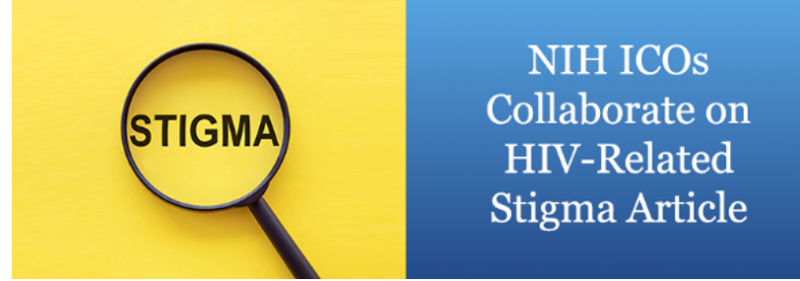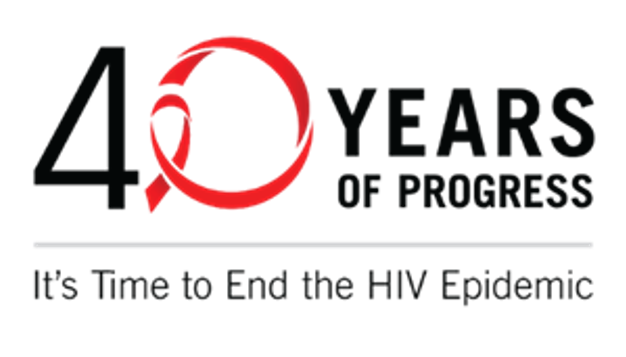40 Years of Progress and Persistent Challenges in HIV/AIDS
We Need to Do More for Women
By Dr. Janine A. Clayton
 So much has changed in the 40 years since the Centers for Disease Control and Prevention's first Morbidity and Mortality Weekly Report (MMWR) article on what is now known as HIV (human immunodeficiency virus). The scientific community has reached remarkable milestones in 40 years: the development of a highly effective antiretroviral therapy, growth in our understanding of the nuances of the virus and its transmission, as well as breakthroughs in prevention and implementation science. The U.S. Department of Health and Human Services (HHS) plan to effectively end the HIV epidemic by 2030 is a beacon of hope that was once unimaginable. However, even with advances in pre-exposure prophylaxis (PrEP), the success of the “treatment as prevention” strategy, and the acceptance of the Undetectable=Untransmittable concept, women—particularly women of color and transgender women—have not reaped the full benefits of prevention. Additionally, women with HIV have higher rates of non-AIDS comorbidities than men with HIV, and much is still unknown about sex differences when it comes to a cure for HIV. Yet despite these gaps in knowledge and known differences, women remain underrepresented in cure research, and with women now acquiring HIV at a higher rate than men globally, the need for HIV research specific to women continues to grow.
So much has changed in the 40 years since the Centers for Disease Control and Prevention's first Morbidity and Mortality Weekly Report (MMWR) article on what is now known as HIV (human immunodeficiency virus). The scientific community has reached remarkable milestones in 40 years: the development of a highly effective antiretroviral therapy, growth in our understanding of the nuances of the virus and its transmission, as well as breakthroughs in prevention and implementation science. The U.S. Department of Health and Human Services (HHS) plan to effectively end the HIV epidemic by 2030 is a beacon of hope that was once unimaginable. However, even with advances in pre-exposure prophylaxis (PrEP), the success of the “treatment as prevention” strategy, and the acceptance of the Undetectable=Untransmittable concept, women—particularly women of color and transgender women—have not reaped the full benefits of prevention. Additionally, women with HIV have higher rates of non-AIDS comorbidities than men with HIV, and much is still unknown about sex differences when it comes to a cure for HIV. Yet despite these gaps in knowledge and known differences, women remain underrepresented in cure research, and with women now acquiring HIV at a higher rate than men globally, the need for HIV research specific to women continues to grow.
Biological and Social Factors Can Increase Women’s and Girls’ Vulnerability to HIV
Worldwide, women account for more than half of HIV cases, and young women are twice as likely as young men to acquire HIV. The vaginal microbiome and sex differences in innate immunity are compounded by social factors such as stigma, social norms, and barriers to accessing sexual and reproductive health services. These social factors create gendered inequalities and shape women’s and girls’ HIV risk. Experiences of violence, economic opportunities (or lack thereof), and negotiating skills needed to achieve safe sexual encounters and needle cleaning with drug use partners are all powerful factors that can influence risk for HIV exposure and potential ensuing health outcomes. For women of color, structural racism and systemic inequality diminish the ability to practice HIV risk reduction strategies.
Black Women Account for More Than 50% of New HIV Diagnoses Among Women in the U.S.
This disparity exists despite the overall declines in new diagnoses, with members of understudied, underrepresented, and underreported (U3) populations being diagnosed with HIV at disproportionately higher rates. U3 groups include rural women, transgender women, women living at/near/below the poverty line, and Black and Latina women. Enhancing resilience and reducing stigma for Black women with HIV will be key considerations in intersectional HIV prevention efforts.
NIH Works to Address Stigma and Health Disparities that Put Women at Greater Risk for HIV
Beyond stigma, encouraging progress is being made on multiple fronts for women in HIV/AIDS research. Here are just a few examples:
- To help address distinctive research needs, the ORWH U3 Administrative Supplement Program targets interdisciplinary, transdisciplinary, and multidisciplinary research focused on the effects of sex and gender influences at the intersection of several social determinants of human health and illness. Since 2017, ORWH has funded nine HIV-focused U3 supplements. We encourage the submission of proposals that explore the influence of HIV-related stigmas on U3 populations and communities. (Learn more here.) In addition to supplemental funding, educational resources for investigators—such as the U3 Women’s Health Lecture Series, which featured a session on mass incarceration, housing, and HIV/STI risk—are important elements of the U3 program.
- Two recipients of the “Intersection of Sex and Gender Influences on Health and Disease” R01 are exploring sex differences in HIV. (See Sex, Gender and the Immunopathogenesis of HIV and Hormonal control of HIV latency for more details.)
- The National Institute of Allergy and Infectious Diseases recently awarded nine supplements to support research on reaching cisgender heterosexual women with PrEP.
- On June 15, 2021, at 3:00 p.m. ET, the Sex and Gender in Health and Disease scientific interest group, founded by ORWH, will feature Alberto Bosque, Ph.D., discussing his research on the influence of sex hormones and hormonal replacement therapies on HIV cure strategies. (Registration is not required. Join here.)
Taking a broad view of the investigations conducted, even with known sex and gender differences in HIV, women unfortunately remain underrepresented and understudied in HIV research. However, I am proud of the role NIH has played in HIV/AIDS research and optimistic about recent advances. A few notable examples include:
- Research supported in part by NIH has found racial, ethnic, and geographic variability in women’s attitudes toward PrEP, illuminating important areas for future research.
- The AIDS Clinical Trials Group’s A5366, aka the Moxie study, was the first HIV cure study conducted entirely with women.
- The International Maternal Pediatric Adolescent AIDS Clinical Trials (IMPAACT) Network’s VESTED study found that dolutegravir (DTG)-containing antiretroviral regimens were more effective in suppressing HIV and safer for the infant than a commonly used regimen containing efavirenz (EFV).
- The HIV Prevention Trials Network’s study titled Integrating HIV Prevention, Gender-Affirmative Medical Care, and Peer Health Navigation to Prevent HIV Acquisition and HIV Transmission for Transgender Women in the Americas is proactively engaging with transgender women—a population that is disproportionately affected by HIV and experiences unique barriers to prevention and care.
The Work Will End When HIV Ends
Events
The Federal Government is proud to host a variety of events to commemorate the 40th anniversary of HIV throughout the month of June and to support events throughout the HIV community. Details can be found here.
- Reflections on 40 Years of AIDS – CDC Virtual Museum
- Live with Leadership
- To commemorate the 40th anniversary of HIV, Federal agencies are holding a series of Live with Leadership sessions hosted by Harold Phillips, Chief Operating Officer of Ending the HIV Epidemic in the U.S., to reflect and honor the more than 32 million people who have died from acquired immune deficiency syndrome (AIDS)–related illness globally, including 700,000 in the U.S., since the start of the HIV epidemic. The sessions include:
- Community Dialogue: June 5th & Long-Term Survivors, Saturday, June 5, at 2:00 p.m. ET
- 40 Years of HIV: Federal Leadership, Thursday, June 17, at 1:00 p.m. ET
- 40 Years of Progress: HIV Testing, Tuesday, June 22, at 4:00 p.m. ET
- To commemorate the 40th anniversary of HIV, Federal agencies are holding a series of Live with Leadership sessions hosted by Harold Phillips, Chief Operating Officer of Ending the HIV Epidemic in the U.S., to reflect and honor the more than 32 million people who have died from acquired immune deficiency syndrome (AIDS)–related illness globally, including 700,000 in the U.S., since the start of the HIV epidemic. The sessions include:
Information and Training Resources
- HHS Office on Women’s Health: Tools to Promote Gender Responsiveness in HIV Prevention Programs for Women and Girls and Women and HIV
- HIV.gov: HIV and Women’s Health Issues
- National Institute of Allergy and Infectious Diseases: Women’s Interagency HIV Study and the Division of AIDS Learning Portal
- NIH Office of AIDS Research: About the Office of AIDS Research
- Office of HIV/AIDS Network Coordination: Biomedical HIV Prevention for Women and Women & HIV Cure-Related Research training materials
